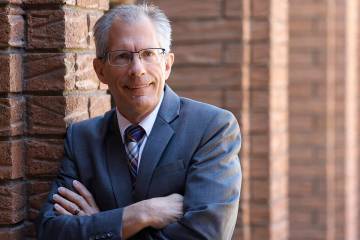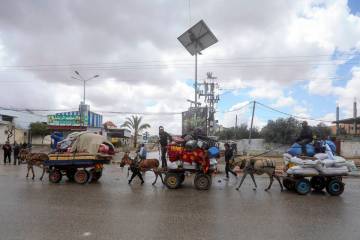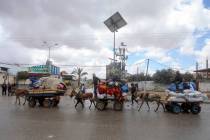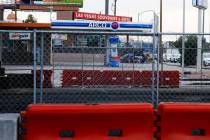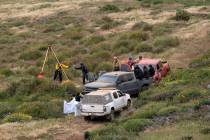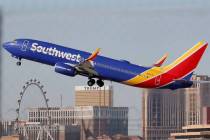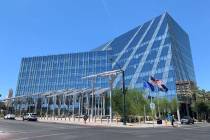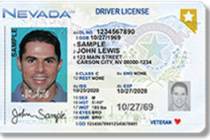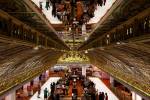Area 51 burning revealed
For 17 years, Fred Dunham never spoke publicly about where he used to work or what he once did at the place he calls "the location."
Dunham says he feared he would be arrested and sent to jail for breaching a national security oath he took in 1981 when he was hired by EG&G Special Projects.
But last week he went on the record about the nine years he spent as a security officer at the classified Air Force installation, 90 miles north of Las Vegas, telling a Department of Labor hearing representative how he supervised burning of poisonous stealth coatings in large open pits.
That, he said, is the root of his ongoing health problems, including chronic obstructive pulmonary disease. And Dunham said he doesn't want his chance at compensation to be lost because he can't talk about his work.
Like hundreds of former Nevada Test Site workers, Dunham is seeking compensation under an act that gives $150,000 to Energy Department workers and contractor workers who can prove their sometimes fatal illnesses are linked to exposure to toxic materials where they worked during the Cold War era.
"Under no circumstances was this material to be destroyed in an open pit environment. It was supposed to be destroyed in an EPA certified incinerator," Dunham, 56, told Labor Department hearing agent Sandra Vicens-Pecenka about the disposal process.
At the time, EG&G Special Projects was a subcontractor for the Department of Energy and Department of Defense.
Dunham wore an Energy Department badge that allowed him access to "the location."
"I left there because I was medically de-accessed by the military site physician because of my breathing problems," he said before the hearing. "I had coughed so hard that I separated the ribs on this side of my chest."
Dunham said the Air Force "has absolutely denied that anything occurred at the location. I am the individual who signed for the 100 gallons of diesel fuel, and I observed the pit being ignited. That was my job."
He didn't have to spell out for Vicens-Pecenka the place where this occurred, the 38,400-acre installation along the dry Groom Lake bed where for decades such high-tech U.S. aircraft as the U-2 Dragon Lady and SR-71 Blackbird spy planes and the F-117A Nighthawk stealth fighter jet have been tested.
Among the documents Dunham submitted was a March 2 letter to him from Sen. Harry Reid, D-Nev., that names the location. "Thank you for contacting me about federal compensation for Area 51 workers," the letter begins.
In addition, Dunham presented Vicens-Pecenka with a letter from his doctor stating that he has chronic obstructive pulmonary disease and that he was in excellent health "prior to working at that particular site."
Another document, listed as Exhibit No. 2 in Dunham's case, is an unclassified May 19, 2005 "Safety Supplement" for emergency responders that warns about the danger of inhaling "hazardous byproducts of burning wreckage" of F-117A stealth fighter jets.
In one instance in New Mexico, a firefighter died after responding to burning wreckage of a stealth fighter.
After the Aug. 28 hearing, Dunham described how he was exposed to dioxins and furans from the open-pit burning of 55-gallon drums of resins, solvents and hardening compounds, stuff he said Lockheed Corp. used to coat its radar-evading stealth aircraft.
Kenworth tractor-trailer rigs from Lockheed's Southern California facilities in Burbank and Palmdale "would come in late Tuesday," he said.
"Then Wednesday morning, I would meet them at the burn pit and the semi was opened and the material was put in the pit," Dunham said. "I was there to supervise the unloading of the material and make sure no other subcontractors came close to the pit."
After the drums of stealth coatings were dumped in a trench, other classified material such as technical manuals were put on top along with wood.
"Then I would make a call to POL, short for petroleum, oil and lubricants. Then the truck would arrive, and I would sign for 100 gallons of diesel fuel, which was sprayed upon the pit," he said. "Then, at approximately 3:30 p.m., I would make a call to the fire department and they would put a flare in the pit.
"As the fire burned through the night, these drums would explode and a big white cloud of smoke would whiff out through the area. You could wake up the next day, and the whole valley would look like L.A. smog," Dunham said.
"If you were standing there doing your job, you basically inhaled smoke for six hours. My wife would ask, 'Why does your uniform smell so noxious?' I would button my lip and say, 'Just wash the uniforms.' I wasn't at liberty to discuss it," he said.
Inhaling the smoke from 100 yards away affected Dunham's metabolism, causing him to gain weight. "I gained 80 pounds in a year," he said.
Before he worked at Area 51, Dunham weighed 196 pounds. "I used to play handball and racquetball. ... I was buff. I was a nonsmoker. I've never smoked in my life. Now I can't even blow out a candle on a birthday cake."
Years later, his body swelled to as much as 435 pounds, but he has since lost weight and was down to 380 pounds last week.
The burning of stealth coatings in open pits at Area 51 was the subject of a pair of decade-long lawsuits in which former workers and widows of former workers contended the practice amounted to criminal violations of Environmental Protection Agency laws.
In April 2003, a 9th U.S. Circuit Court of Appeals panel found the Justice Department did not abuse national security when information was struck from court documents in the 1994 cases.
The same panel ruled in 1998 that the plaintiffs, who were clients of George Washington University environmental law professor Jonathan Turley, were not entitled to learn what hazardous materials were used at Groom Lake or how they were disposed. That same year, the U.S. Supreme Court refused to hear an appeal of the ruling sought by Turley.
Central to the cases are presidential memorandums to the chiefs of the EPA and the Air Force, saying it was of "paramount interest" to exempt the Groom Lake installation from adhering to federal, state, interstate or local laws regarding solid waste or hazardous waste if classified information would be disclosed.
Officials for the Air Force and EG&G Special Projects wouldn't comment on operations at Area 51 or acknowledge that open pit burning of stealth coatings occurred there.
Lockheed employees who became ill from inhaling fumes from stealth coatings at the Southern California facilities have since been compensated by the company.
And, ingredients of the secret material is no longer a secret to some foreign nations after an F-117A crashed in Yugoslavia in 1999 and parts of the wreckage were recovered by enemy forces.
When Dunham first applied for compensation under the Energy Employees Occupational Illness program, the Labor Department denied his claim because he didn't submit complete medical records.
But after last week's hearing, Vicens-Pecenka told him that because of the medical evidence and the revelations about his employment at Area 51, "you have a pretty good chance."
Dunham said that is encouraging, but he wants to see secret military installations comply with state and federal environmental laws so other workers and wildlife in those remote areas are protected.
Recently, 71 wild horses died from high levels of nitrate they drank from a watering hole at the Tonopah Test Range.
Investigators from state and federal agencies are still trying to pinpoint the source of the contamination. But a former worker, Kevin Dye, said the deaths could have been prevented if nitrogen compounds used for de-icing planes were properly disposed in a catch basin instead of being allowed to run off into the desert untreated.
Dante Pistone, a spokesman for the Nevada Division of Environmental Protection, said Friday that representatives from the division's Bureau of Water Pollution Control made a trip to the site at the Tonopah Test Range. Their preliminary findings "seem to eliminate the airstrip or de-icing materials as possible sources of the nitrates."
The de-icing agents currently used by the Air Force don't contain nitrogen compounds, and the pond near where the horses died is uphill from the airfield, some five miles away, Pistone said in an e-mail Friday.
But Dunham said the source of contamination from past years is no mystery to him.
He said urea, a crystalline substance high in nitrogen, was used at the Groom Lake installation when he worked there, and, like at the Tonopah Test Range, the contamination accumulated over years in the dry lake bed.
"When it got cold up there, they had a tank of it to de-ice airplanes, and they gave us a sack of it to throw on the ramp where passengers exit," Dunham said.
"What it did is eat the surface off the concrete. There was no control over it. They're supposed to have gutters and things where the stuff rolls into a sanitation facility."







